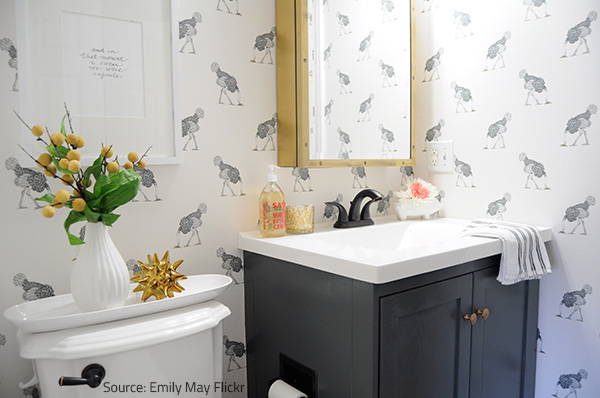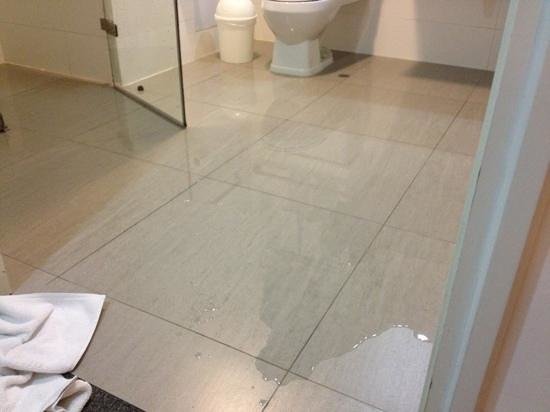Factors Leading to Bathroom Water Harm
Factors Leading to Bathroom Water Harm
Blog Article
Are you trying to locate help about How to Repair and Prevent Bathroom Water Damage??

Water damage frequently happens in the restroom because of the water used daily. In some cases, the damage could be a little mold and mildew from the shower. Various other times, it's large damages on your floor. Whatever it is, it is always excellent to recognize the reason and also avoid it before it happens.
This overview will go through some of the usual root causes of water damage in the washroom. We will certainly likewise examine what you can do to stop these causes from damaging your washroom. Allow's dive in.
These are the common factors you would certainly have water damage in your shower rooms as well as how you can detect them:
Excess Wetness
It's amazing to have that long shower and also sprinkle water while you dance around and also imitate you're carrying out, yet often these acts could create water damage to your shower room.
Splashing water around can create water to visit edges and also create molds. Watch how you spread out excess dampness around, as well as when you do it, clean it up to avoid damages.
Fractures in your wall tiles
Washroom wall floor tiles have been particularly created for that objective. They safeguard the wall surface from moisture from individuals taking showers. However, they are not unbreakable.
Sometimes, your shower room wall ceramic tiles fracture and also allow some wetness to seep into the wall surface. This could potentially damage the wall if you do not take any activity. If you notice a fracture on your wall surface tiles, fix it immediately. Don't wait till it destroys your wall surface.
Overflowing toilets as well as sinks
As human beings, in some cases we make blunders that can cause some water damage in the shower room. As an example, leaving your sink tap on might create overflowing as well as damages to various other parts of the bathroom with moisture.
Likewise, a damaged toilet might create overruning. For example, a broken bathroom manage or various other parts of the tank. When this happens, it might harm the floor.
As quickly as you notice an overflowing sink or bathroom, call a plumbing professional to aid deal with it right away.
Ruptured or Leaking Pipelines
There are several pipelines lugging water to various parts of your bathroom. Some pipes take water to the toilet, the sink, the taps, the shower, and numerous various other areas. They crisscross the tiny location of the washroom.
From time to time, these pipes could get rusty and burst. Other times, human action could cause them to leak. When this happens, you'll locate water in the edges of your washroom or on the wall surface.
To identify this, keep an eye out for gurgling wall surfaces, mold and mildews, or mold. Call an expert emergency plumbing to fix this when it happens.
Roof Leakages
Sometimes, the trouble of water damage to the washroom could not originate from the restroom. For example, a roof leakage can trigger damage to the restroom ceiling. You can find the damages done by considering the water discolorations on the ceiling.
If you discover water stains on your ceiling, examine the roof covering to see if it's damaged. Then, call a specialist to aid fix the problem.
Conclusion
Water damage to your washroom can be frustrating. Nevertheless, you can handle it if you protect against a few of the causes mentioned in this guide. Call an expert emergency plumbing professional if you see any extreme damages.
How to Repair a Water-Damaged Wall in the Bathroom
All you need to know to repair bathroom wall water damage – from identifying the water source to finishing the repair professionally. If you don’t act quickly to resolve a water damage problem, you could find that it develops into a mold issue and/or cause structural damage to your home. Follow this guide to repair your bathroom before it's too late.
All you need to know to repair bathroom wall water damage
Water damage is a common household problem, and one that, if left unrepaired, can quickly lead to structural problems and health issues. The two most likely rooms where water damage may occur is the bathroom and the kitchen – where water is used often and there is high humidity.
What is water damage?
It is easy to think of water damage as caused by a flood or leaking tap or burst water pipe. However, when water damage is assessed, there are three main categories into which water falls (as classified by the American National Standards Institute). These categories are defined as:
Category 1 Water – ‘Clear Water’
This is sanitary water. There is usually no major threat to health by washing with this water, drinking it, or inhaling if it is streaming. Most water that enters your home will be category 1 water, while most water leaving your home will be either category 2 or 3 water. It may also come from melting snow, rainwater and water tanks.
Damage caused by this type of water can usually be repaired or restored, though this doesn’t mean that there are no potential health issues.
Category 2 Water – ‘Grey Water’
This is contaminated water – sometimes considerably so – and will cause illness if consumed or if it comes into contact with your skin. Water damage in this category is often caused by overflows from toilet bowls, and damage to washing machines and dishwashers. While damaged items might still be repaired or restored after damage by grey water, it is more difficult and more expensive to do so.
If the water damage in your home has been caused by grey water, it is advisable to have repairs made by professionals.
Over time, grey water will deteriorate and become black water.
Category 3 Water – ‘Black Water’
Category 3 water, also known as black water, is highly contaminated and a great risk to health. This may contain raw sewage, heavy metals, and other toxic substances. It will smell terrible.
If this is the water that has caused damage in your bathroom, do not touch it. Stop the water flowing if possible, seal the room and call the experts: it really isn’t worth the risk of ill health and disease that could be fatal. It is very unlikely that items can be repaired or restored if they have been damaged by black water.
https://www.porterscleaning.com/blog/how-to-repair-a-water-damaged-wall-in-the-bathroom/

I'm certainly very fascinated by How to Repair and Prevent Bathroom Water Damage? and I am assuming you appreciated the piece. Enjoyed reading our piece of writing? Please share it. Help another person check it out. Many thanks for your time spent reading it.
Book 24/7 Report this page